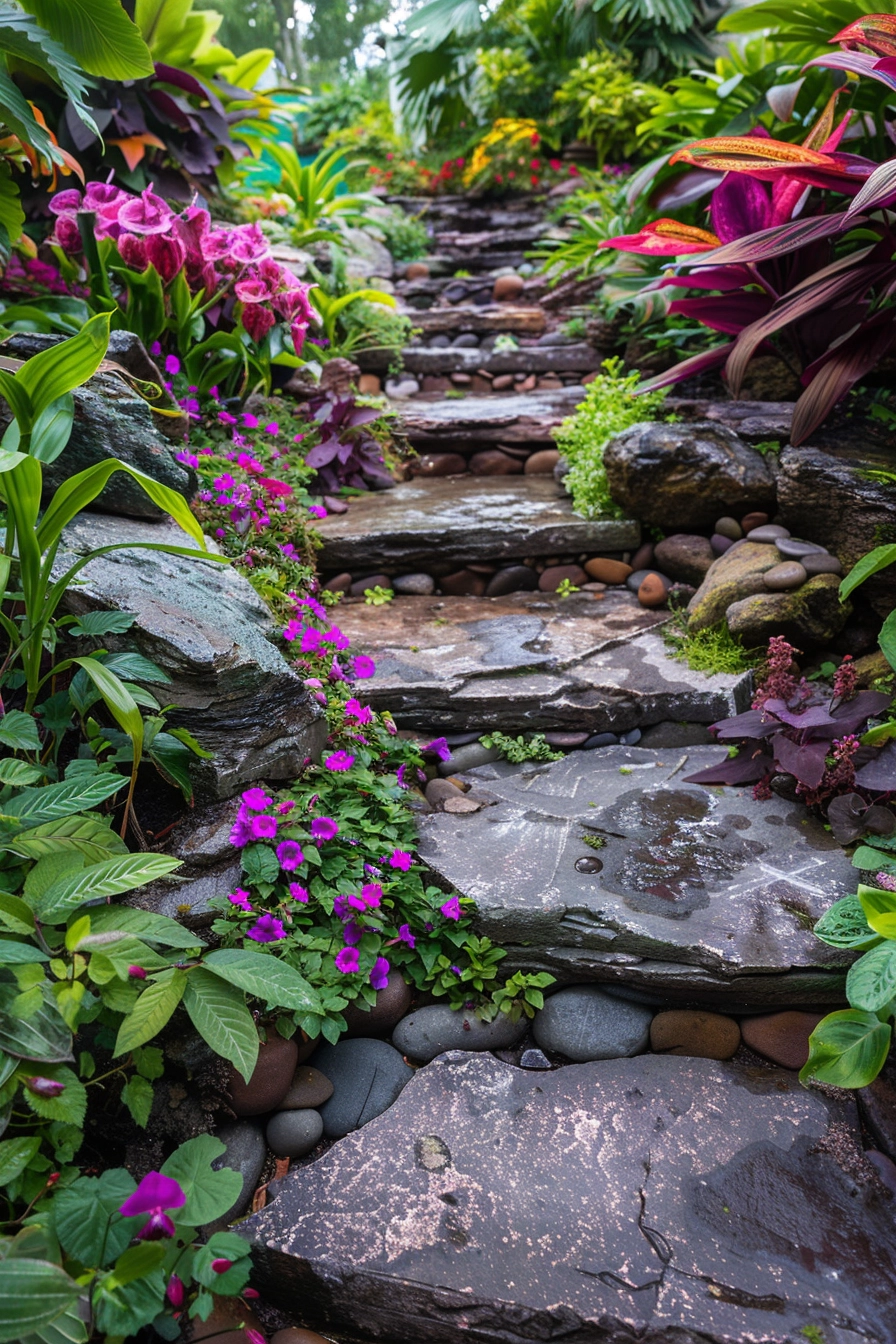Adding a rock garden to your yard is a creative way to add depth and dimension to a flat or mundane space. Rocks can be used to define slopes, substitute for a lawn, or outline different areas of the yard. Rock gardens are low-maintenance and lend year-round structure to the landscape. To build a successful rock garden, it’s important to choose the right site, do thorough research, and carefully plan the design. Varying the materials, such as pebbles, gravel, and stepping stones, can add visual interest. Also, select plants that will thrive in your climate and complement the rocks.
Key Takeaways
- Building a rock garden can add depth and dimension to your yard.
- Choose the right site and thoroughly research the design.
- Vary the materials and select plants that thrive in your climate.
- A rock garden is low-maintenance and adds structure to the landscape.
- Consider using pebbles, gravel, and stepping stones for visual interest.
Tips for Designing a Rock Garden
Before starting your rock garden project, it’s important to choose and evaluate the site where it will be located. Consider the sun exposure, water requirements, and the overall style that will complement your home and yard.
Research and gather ideas by looking at photos of rock gardens and visiting local gardens. Draw up a design plan, keeping in mind the scale of your home and yard. Choose a style that matches your home, such as a Zen rock garden or an alpine garden, and select rocks that are indigenous to your region for a natural look.
Varying the size, shape, and color of the rocks will add visual interest to the garden. Consider incorporating features like waterfalls or stepping stones to enhance the natural appeal of the rock garden.
“A well-designed rock garden can transform your outdoor space into a beautiful oasis of tranquility.
When it comes to rock garden features, the possibilities are endless. You can create a focal point with a striking rock formation or use rocks to define pathways and borders. Adding a water feature like a waterfall or a small pond can bring a calming element to the garden and attract birds and butterflies.
Remember to consider the practical aspects as well. Choose rocks that are sturdy and weather-resistant to withstand the elements. Smooth stones can be used for seating areas, while larger boulders can act as natural dividers. By combining different textures and shapes, you can create a visually appealing and dynamic rock garden.

Key Tips for Designing a Rock Garden:
- Select rocks that are indigenous to your region for a natural look.
- Vary the size, shape, and color of the rocks for visual interest.
- Incorporate features like waterfalls or stepping stones to enhance the garden.
- Consider the overall style of your home and yard when choosing a design.
- Create focal points with striking rock formations or water features.
- Use rocks as borders, pathways, or seating areas for added functionality.
“Designing a rock garden is an opportunity to let your creativity shine. Have fun experimenting with different elements and creating a space that reflects your style and personality.
Selecting and Planting in a Rock Garden
When it comes to creating a vibrant rock garden, selecting the right plants and flowers is crucial. Not only should they thrive in your climate, but they should also complement the natural beauty of the rocks. In traditional rock gardens, alpine plants indigenous to mountainous regions are popular choices. These plants are well-adapted to the conditions found in rock gardens, making them a perfect fit.
For added visual interest and height, consider incorporating perennials, ornamental grasses, and small shrubs into your rock garden. These plants will add vertical dimension to your garden, making it more visually appealing. Additionally, groundcovers can be used to soften the appearance of the rocks and create a seamless transition between the different elements of your garden. Creeping plants like thyme or moss can be especially effective in filling in spaces between rocks and creating a lush, textured look.
Bulbs are another fantastic addition to any rock garden. Planting bulbs like tulips and narcissus will bring bursts of vibrant colors and captivating fragrances to your garden. These flowers will create a stunning display that contrasts beautifully with the surrounding rocks, making your rock garden unforgettable.
While selecting the right plants is important, so is their care and maintenance. It’s essential to consider the water needs of the plants and ensure they receive adequate hydration. In a rock garden where rocks can absorb heat and cause the soil to dry out quickly, consistent watering is crucial for plant health. Additionally, proper fertilization, weeding, and pruning are essential to keep your rock garden in pristine condition and ensure the plants continue to thrive.

Conclusion
Building a rock garden can be a rewarding and creative endeavor that transforms your backyard into a stunning oasis. By following the tips and ideas mentioned above, you can embark on DIY rock garden projects that will bring depth, dimension, and natural beauty to your landscape.
When creating a rock garden, take the time to carefully plan and consider the site, design, and plant selection. Whether you opt for a small corner adorned with gravel and river stones or a larger-scale project with multiple layers and features, thoughtful preparation is essential for success.
With proper maintenance and care, your rock garden will become a low-maintenance, year-round focal point that brings the natural world into your own backyard. Enjoy the serene and tranquil atmosphere while basking in the pride of your DIY creation.


